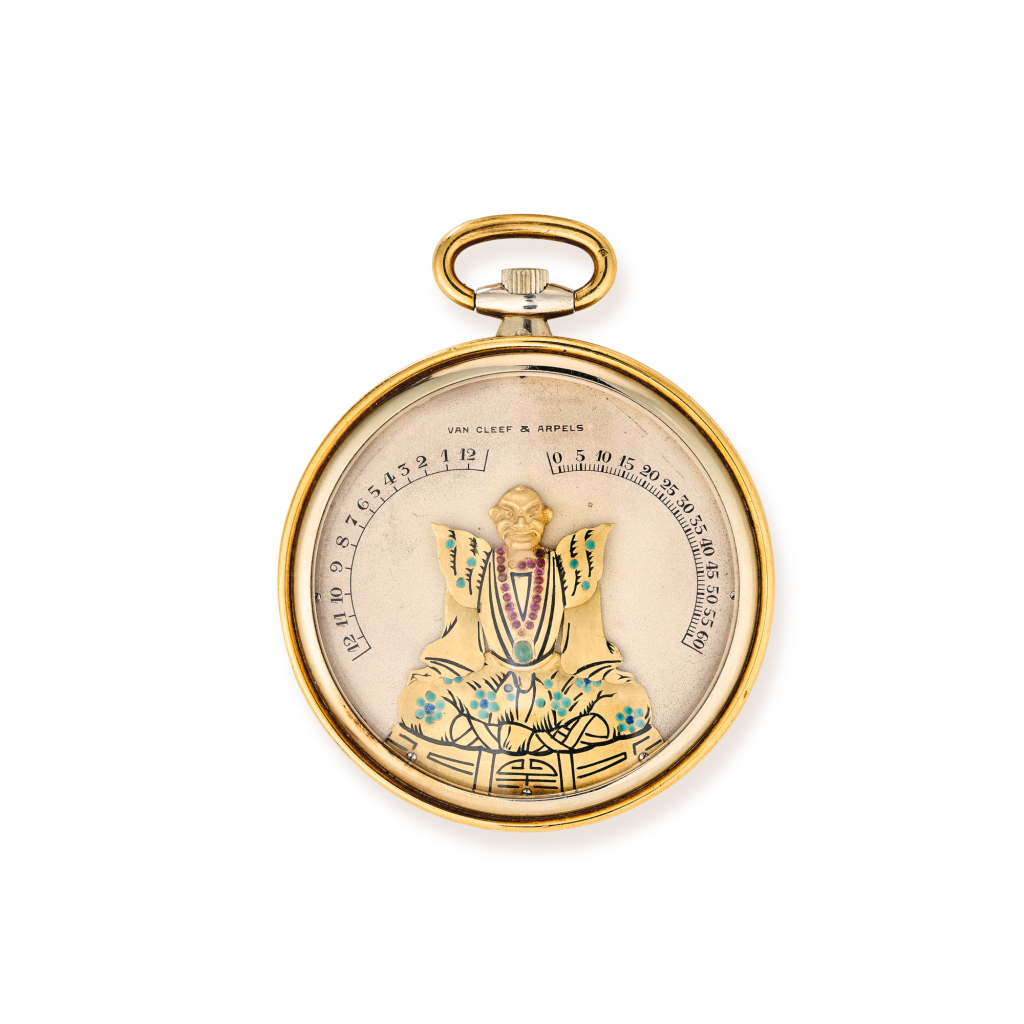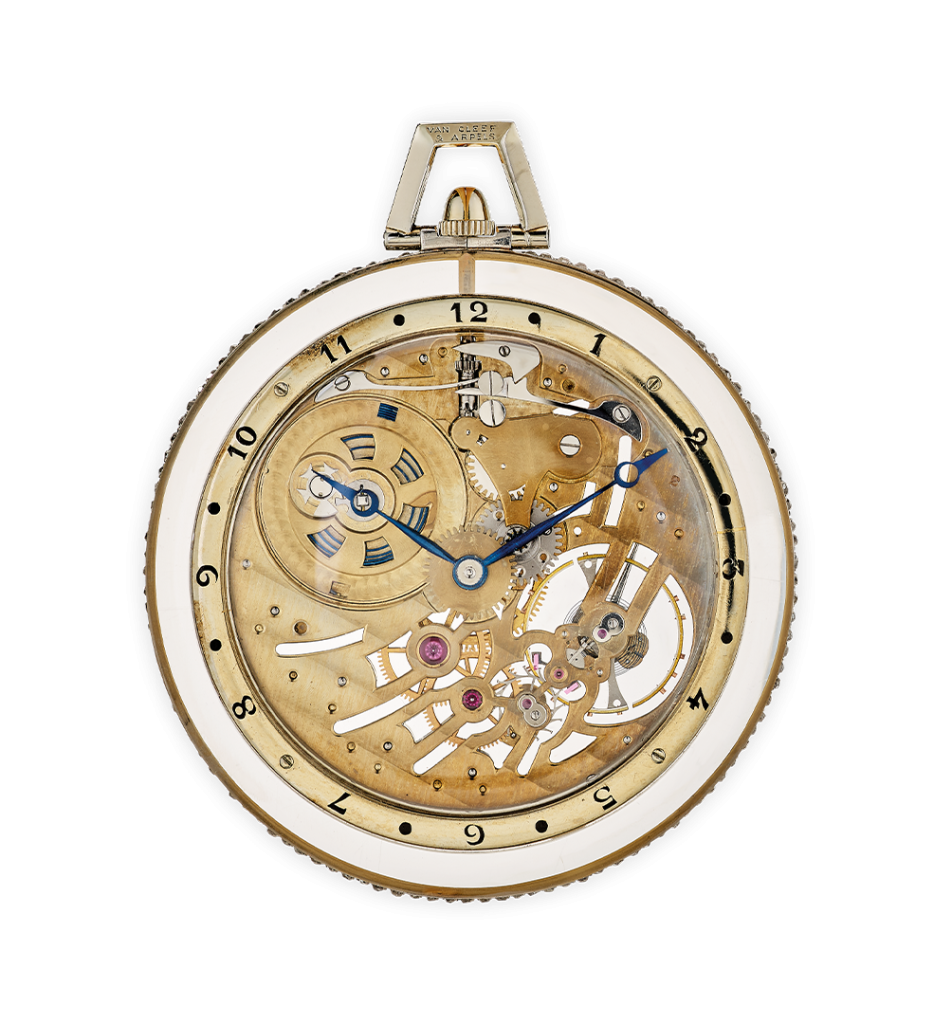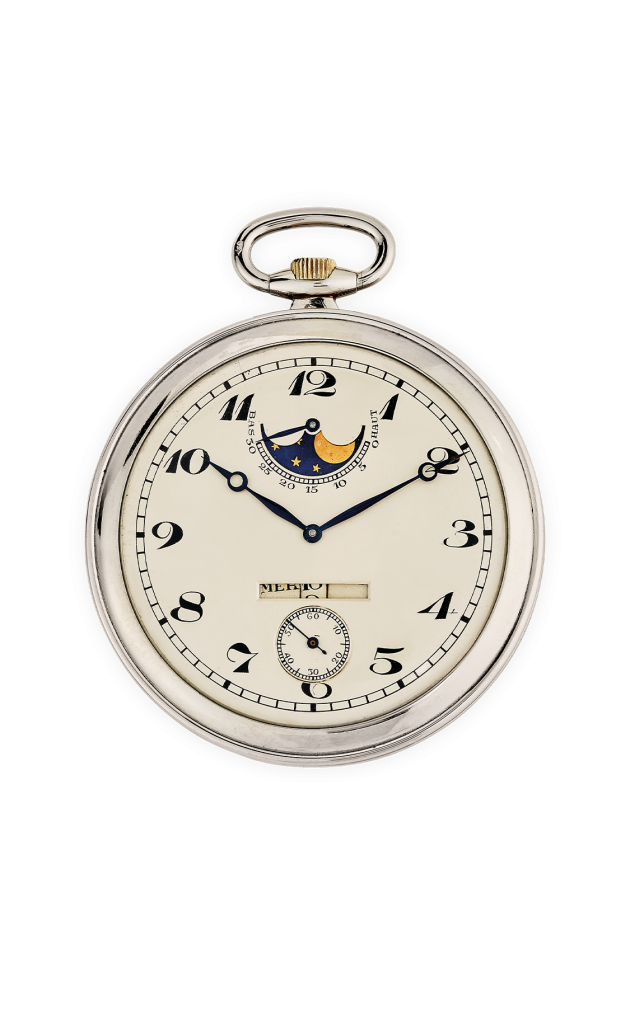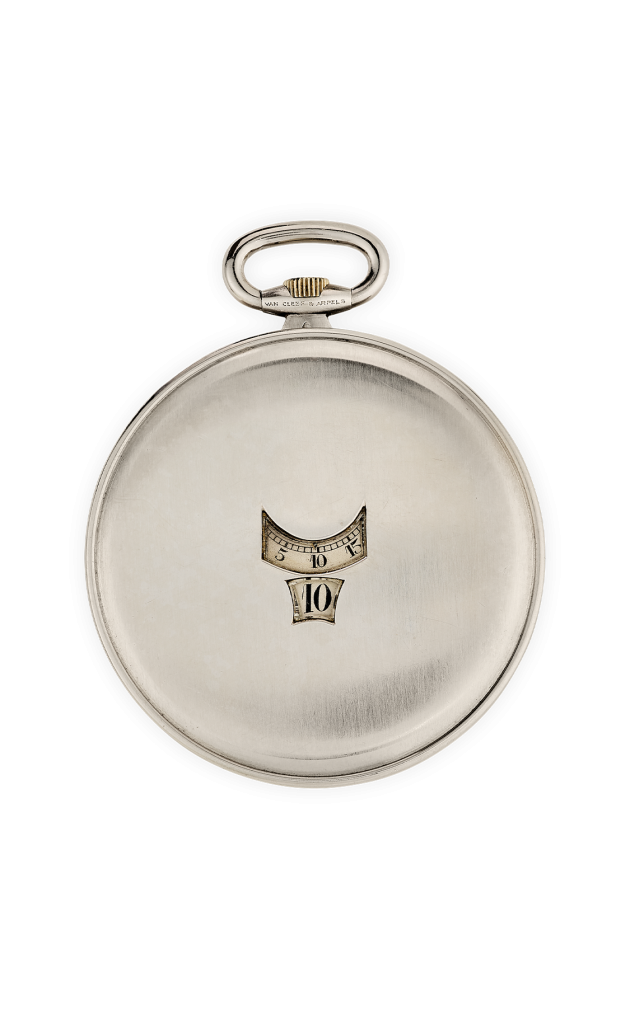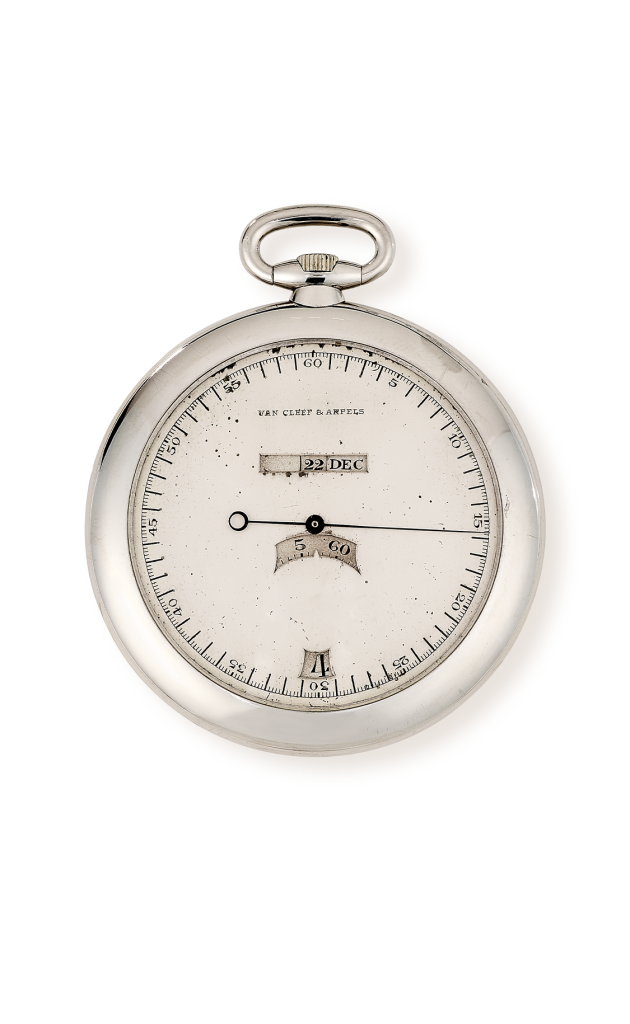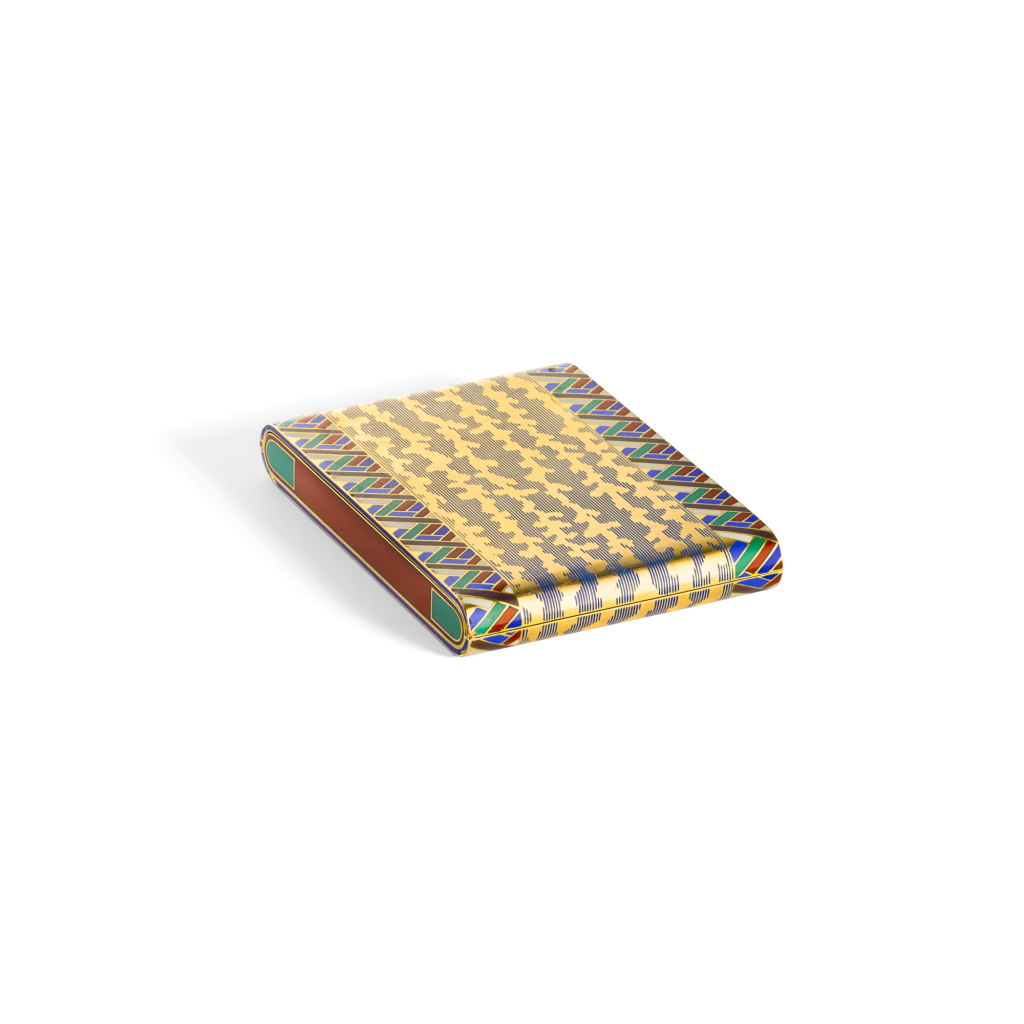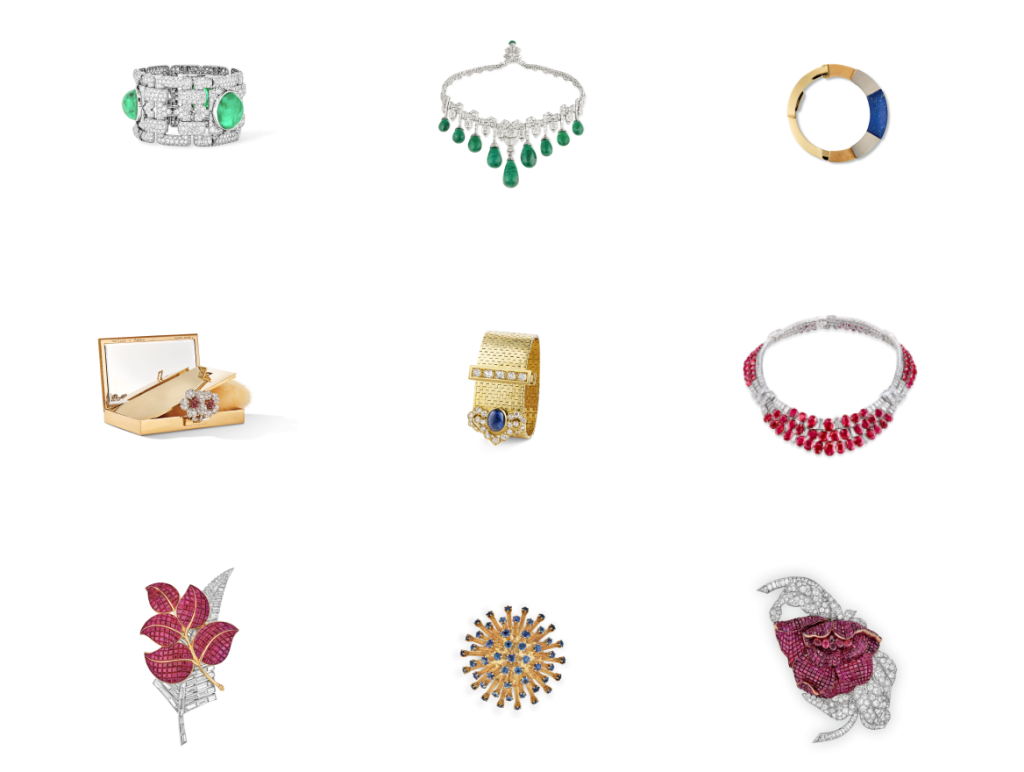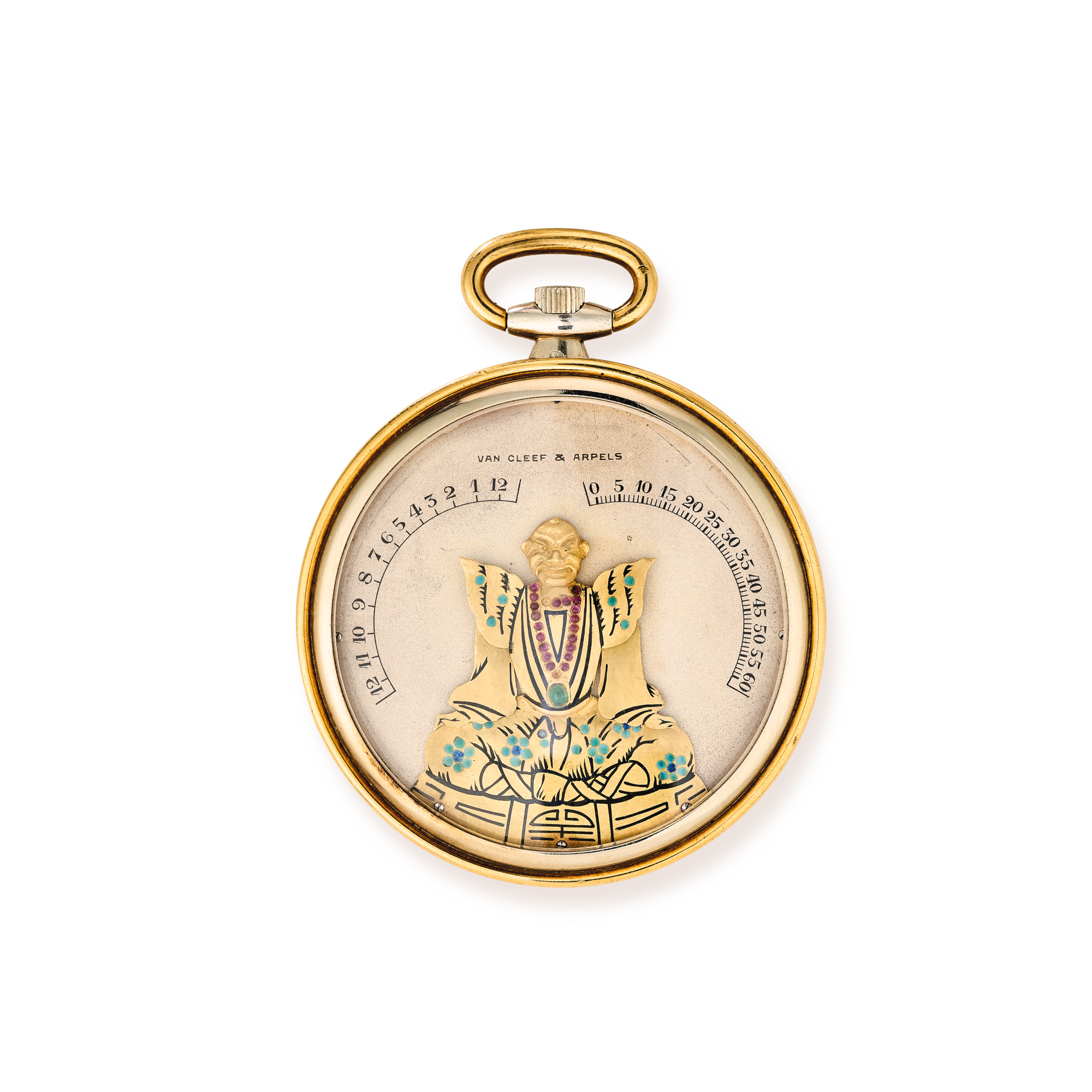
Chinese Magician pocket watch

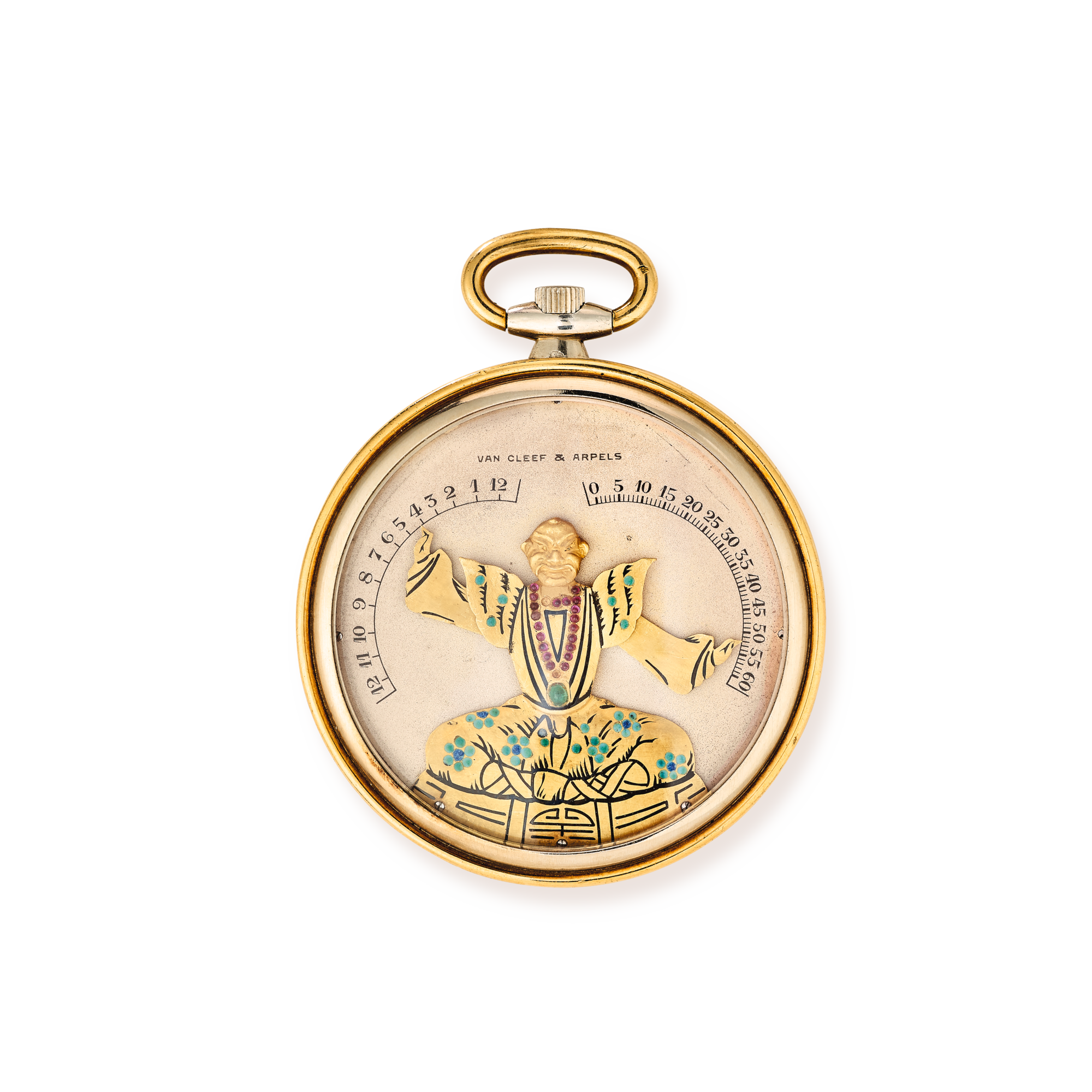
Creation details
- Creation year 1927
- Usage Watch
- Dimensions 67 × 55 mm
The Chinese Magician watch is an important timepiece in Van Cleef & Arpels’ history, as it introduced mechanical automata into the Maison’s creative repertoire.
The circular form of this pocket watch has a yellow gold and osmior frame, with a Chinese magician in yellow gold at its center, seated cross-legged on a plinth inscribed with a Chinese character in black enamel. The magician’s clothes, the folds of which are drawn with black enamel, are decorated with floral motifs in turquoises and sapphires. His outfit is completed by a long ruby necklace ending in an emerald, and his facial features are etched in gold.
The “arms in the air” watches
In addition to its iconography, this watch is of particular note for its mechanism, formerly referred to as “arms in the air” but now known as “double retrograde movement.” This technical innovation enabled an automaton placed in the middle of a dial to be operated mechanically. By pressing on the winder or on a button hidden in the watch’s bezel, the limbs of the central figure—usually the arms—are activated to indicate the minutes on one side and the hours on the other.
The oriental inspiration in the watchmaking
Looking to the inventiveness of the mechanical arts of the Ancien Régime, Van Cleef & Arpels made an old technique fashionable again. The watches created by the Maison after 1927 had figures with exotic features and costumes as their subject, in keeping with those made in the eighteenth century. These timepieces echoed the Orientalist automatons of the two previous centuries. Their iconography can also be linked to the enthusiasm for non-European cultures that developed at the turn of the twentieth century, notably with the success of Sergei Diaghilev’s Ballets Russes. The ambitious decorative sets and colorful costumes dreamed up by Leon Bakst played a large part in spreading a fantasy notion of the Middle and Far East. The care given to the details of the Chinese magician’s costume in this watch, as seen in its preparatory gouachés, recall the refinement of the costume designer and decorator Leon Bakst, who championed this taste for distant lands.
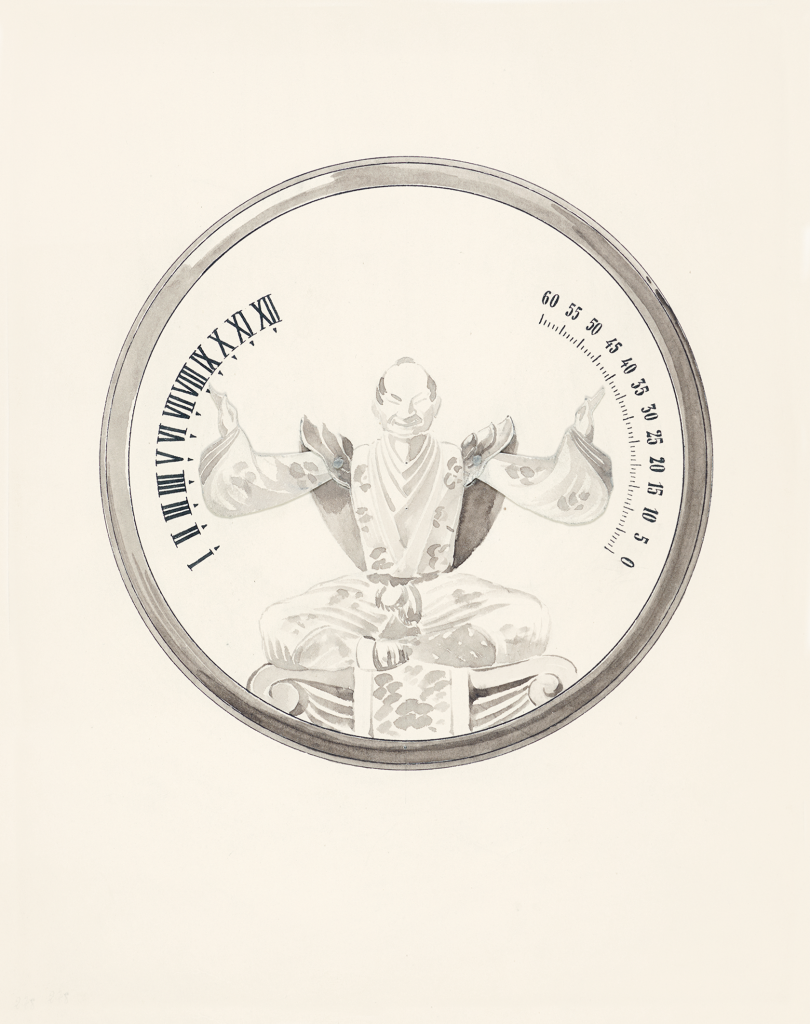
To go deeper
